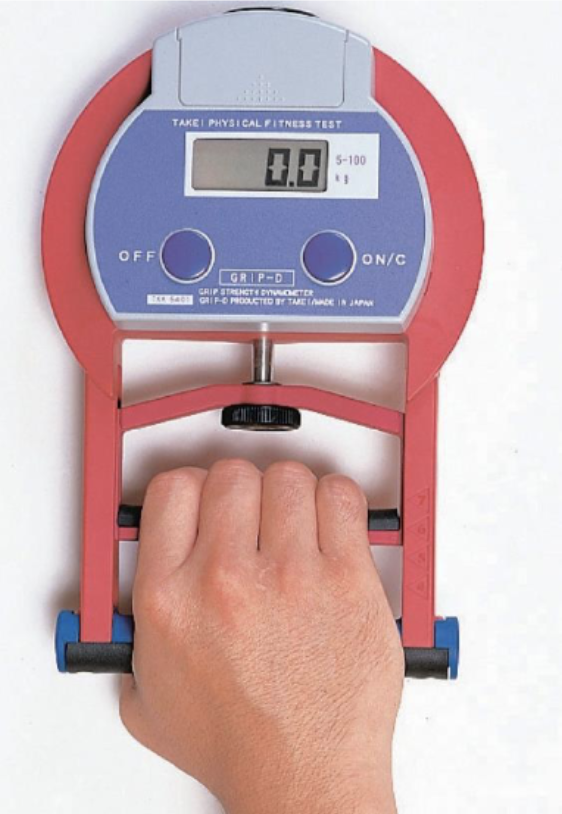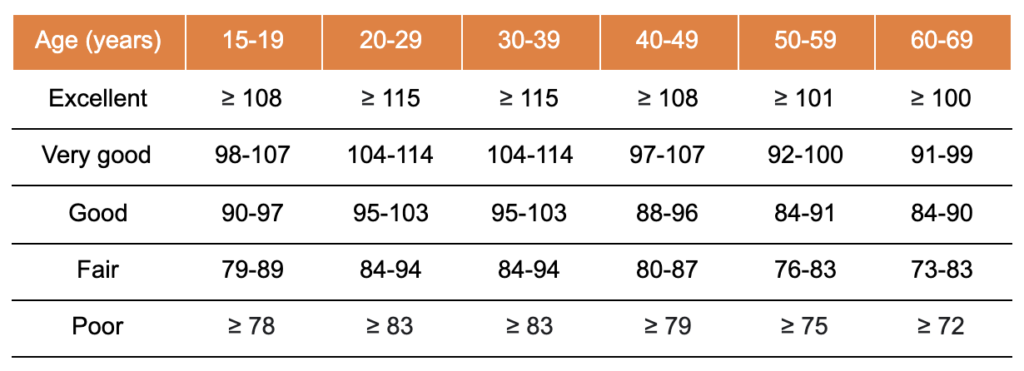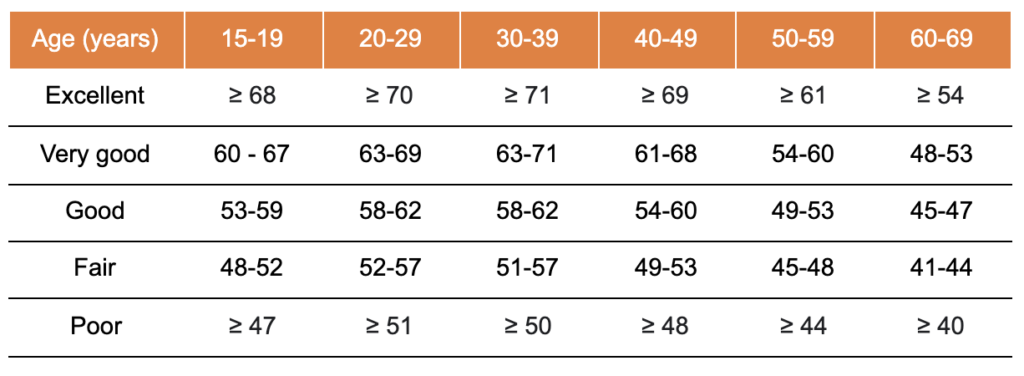
The most common way to test grip strength is by the static handgrip strength test. To conduct this test, we can follow a standardised protocol recommended by the American College of Sports Medicine (ACSM)…

The protocol above is just one way you can conduct the static handgrip strength test. There are a range of other protocols and testing positions…
Other protocols differ with the number of trials the participant undertakes, the duration of the rest periods between trials, the duration the participant squeezes for and the warm up prior to undertaking the test.
If you would like to learn more about the different protocols and the effect each one has on the results, check out Ev Innes review here.
The American Society of Hand Therapists protocol recommends the person undertaking the test sits down and their elbow is held at a right angle throughout the test.
Another variation is starting with the arm above the head and moving it down to the participant’s side whilst squeezing the dynamometer.
The position of the arm and the protocol you use has a significant impact on the result of the grip strength test. Whichever one you choose to use, ensure that the position and procedure remain consistent throughout all tests to ensure reliability and take caution when comparing results to normative data.
You need a handheld dynamometer in order to conduct the static handgrip strength test. The most popular and widely used dynamometer is the Jamar hand dynamometer which is hydraulic and uses a sealed system. It records grip strength in kgs or lbs and the handles can be adjusted to five different positions.
Other types of handheld dynamometers include pneumatic, strain gauge and mechanical instruments.
The grip strength test has been used as a measure of overall strength, however the validity to test this has been questioned. It has therefore been advised for greater validity that if you are using the grip strength test as an indicator of overall strength, grip strength should be measured in conjunction with a measure of lower limb strength.
The Jamar dynamometer has high inter-rater reliability and test-retest reliability, meaning that it will provide accurate readings every time you use it.
To ensure reliability when using the dynamometer, make sure to calibrate the dynamometer regularly as well as follow a standardized testing protocol and position each time.
Grip strength is needed to function in our everyday lives, it helps us to complete mundane tasks such as opening jars or carrying our shopping, but that’s not all. Grip strength is also needed in sport in order to catch, throw or hold something such as a ball.
Grip strength can also give us an indication of overall strength if it is also used in conjunction with a measure of lower limb strength. It can also provide us with an indication of health status. Research indicates that poor grip strength is associated with:
In the tables below, we have provided grip strength normative values for men and women by age following the ACSM static handgrip strength test procedure. In both tables, the values represent a combined score for both left and right hands.
You can use these tables to help guide you in interpreting your score and assess if your score falls within “normal” ranges for your age and gender.


There are three other tests that use a hand dynamometer and can be used to measure static grip strength, these include:
If you are interested in learning about the five-position grip strength test, skip to the next section. If you would like to learn about the rapid exchange grip test or the rapid simultaneous grip test, check out a review on the procedures by Ev Innes here.
The five-position grip strength test, also known as the five handle position test (5HPT) or five-rung test is used to determine the level of genuine effort someone is giving when testing grip strength.
The test involves measuring grip strength in five different grip positions using a hand dynamometer such as the Jamar. It is advised that you squeeze the dynamometer once with as much force as possible at each grip position, starting from the narrowest grip and progressing in order to the widest grip. Complete all five trials on one hand before repeating this protocol on the other hand.
The test results from the five different positions are then plotted onto a graph as force output against handle position for both hands. The shape of that graph is then interpreted to determine the level of genuine effort:
Studies have questioned this test’s validity and effectiveness with factors such as gender and the strength of the participants’ hands influencing the shape of the force output curve.
When it comes to the handgrip strength test, there are many different protocols, positions, equipment, and alternative tests you can use. For more on fitness testing check out this article, or for more reading on specific tests check out these articles on the Yo-Yo test. the 505 agility test, the pro agility test, the sit and reach test.
If you quote information from this page in your work, then the reference for this page is:
How useful was this post?
Click on a star to rate it!
Average rating 4.2 / 5. Vote count: 14
No votes so far! Be the first to rate this post.
We are sorry that this post was not useful for you!
Let us improve this post!
Tell us how we can improve this post?